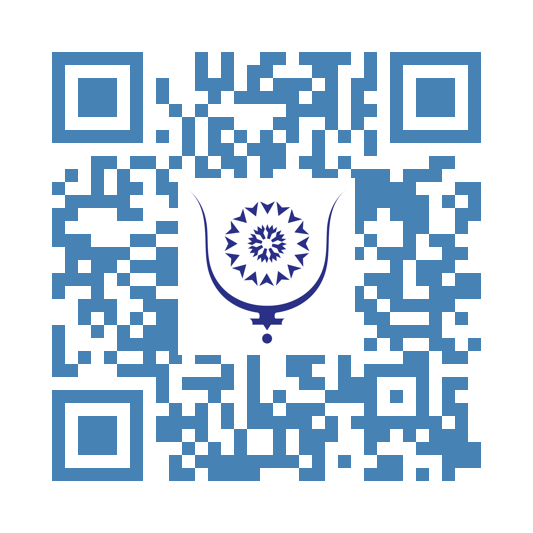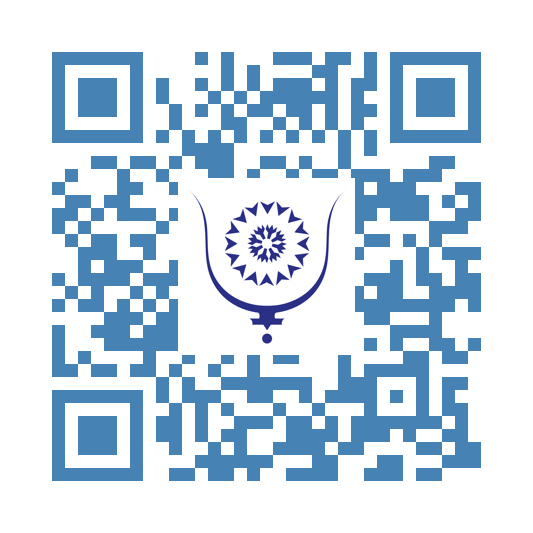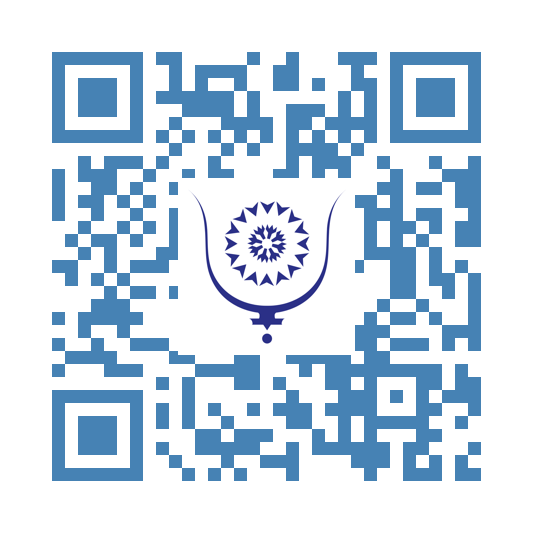Between Ideology and Pragmatism: The Spanish Radical Left's Controversial Stance on Moroccan Sahara...
105
I confess here that it was the writings of Si Lahcen Hadad that pushed me to take a closer interest in this Spanish left, which positions itself in opposition to the Sánchez government, which is itself left-wing. Not reading Spanish, I am therefore somewhat less inclined to pay attention to the repeated ignominies of this left, sick from not being able to access power, sick from its aborted history, sick from what it actually is. So, to exist, it invented a cause. Too bad if it understands nothing about it, too bad if it harms Spain’s interests, too bad if it distorts history, ignores geography and demography, too bad if its reasoning, if it is reasoning at all, is far from logical, too bad if it lies outrageously. The important thing is to exist and to appear to the Spanish public as the defender of the causes of the most deprived... No matter if those people harmed the Spanish people; no matter if they have Spanish blood on their hands. Manifest bad faith.
In Spain, therefore, a significant part of the radical left, mainly represented by formations such as Unidas Podemos, an alliance between Podemos, Izquierda Unida, and other minority groups, maintains a posture—let’s say critical, if not belligerent—towards the Kingdom of Morocco.
This contradictory position is fed by a historical prism marked by colonial memory, “anti-imperialist” struggles, but also by the question of the Sahara, called the "Spanish Sahara" until 1975, as it was a former territory under Spanish domination until the Green March in 1975.
This radical left considers Morocco a belligerent and threatening actor. The debate is not limited to territorial disputes: it fits into an ideological vision where the Moroccan state is often presented as an authoritarian and repressive regime, described as a neocolonial power. This is what underpins the repeated support for the artificial Sahrawi cause, presented as an anti-colonial and anti-imperialist fight. Support for the Polisario Front thus seems embedded in the DNA of these “gauchos,” regardless of developments.
Historically, several components of the Spanish left have expressed clear support for the Polisario Front, founded in 1973, which was nevertheless supported by Gaddafi, then hosted, supplied, and armed by the Algerian regime with the aim of harming Morocco’s interests. This support manifests itself in various forms:
- Filing parliamentary motions in defense of the right to self-determination for this small part of the Sahara alone;
- Participation in international pro-Polisario forums and associative networks that blindly support it, regardless of reports on the embezzlement of aid, rapes, and flagrant human rights abuses in Tindouf;
- Pressure on the Spanish government and European institutions to recognize the political status of the Sahara, neglecting to mention that it was formerly occupied by their country, as a territory to be decolonized, in opposition to Morocco’s historical sovereignty. Even the autonomy proposal, well known in Spain, does not seem to satisfy them.
However, it should be noted that this support comes in a context of strong internal contestation in Spain. Since the socialist government of Pedro Sánchez expressed its support in 2022 for the Moroccan autonomy plan, this radical position has somewhat fractured. This change reflects a pragmatic adaptation by some to the geopolitical, economic, and migratory realities that closely link the two countries.
Faced with challenges related to managing migratory flows through the occupied enclaves of Ceuta and Melilla, as well as security and economic cooperation with the Kingdom of Morocco, the Spanish government has refocused its diplomacy. This has led to a gradual distancing of the left—but not the radical left—from the Polisario, thus marginalizing its influence on official policy.
In this context, some voices within the radical left still try to persuade European institutions to keep pressure on Morocco, demanding that the so-called Western Sahara remain central to priorities to resolve an “unresolved colonial conflict.” Parliamentary groups and “pro-Sahrawi” NGOs continue to denounce bilateral agreements between Madrid and Rabat, refusing that the issue be sidelined in favor of a more “pragmatic” diplomacy.
Spanish and European institutions, the theater of these ideological tensions, thus see the radical left forces seeking to have the question of the so-called Western Sahara recognized as a “state matter.” They denounce Moroccan control over this dossier and strongly contest the diplomatic normalization policies carried out by Madrid.
This line reflects a deep political fracture, where post-colonial idealism and outdated self-determination claims clash head-on with political realism marked by the search for regional strategic balances.
Support for the so-called Sahrawi cause is not without controversy. Activists, commentators, and victims have recalled that the Polisario Front was, in the past, involved in violent operations in Spanish territorial waters, causing the death of Spanish fishermen.
These painful episodes resonate in Spanish public opinion and fuel a virulent critique of radical positions that support a movement with a past combining political struggle and violent actions. This memory weighs heavily in contemporary debate and is exploited by political forces opposed to these radical left positions, notably the Spanish right.
The question of the Sahara, a territory that was Spanish for a time, remains an important point in relations between Spain and Morocco. However, current political, economic, and security realities push for pragmatic Spanish diplomacy, favorable to strengthened cooperation with Rabat, thus marginalizing the radical stance on both governmental and international stages.
The historical legacy is here perfectly exploited for contemporary necessities in managing Ibero-Moroccan relations.
Today, after consulting numerous articles and writings recounting the positions of this left of another era, I understand a little better Si Lahcen Hadad's fight on the subject, and even more so his sharp responses to the remarks of a certain Ignacio Cembrero, whom I now see only as a bland neurotic. Thank you, Si Lahcen.
One question remains: why is the Moroccan left not more inclined to take a stand and strongly denounce the alienated stance of their Spanish counterparts?
Share:
Between Ideology and Pragmatism: The Spanish Radical Left's Controversial Stance on Moroccan Sahara...
copy:
https://bluwr.com/p/281705762
Theurgy
300
Theurgy (Greek: θεουργία, theourgía, “divine work”) is the sacred art of invoking and communing with the divine through ritual acts, moral purification, and contemplative discipline. Emerging from the spiritual philosophy of late Neoplatonism, especially as formulated by Iamblichus (c. 250–325 CE), theurgy is distinguished from other forms of magic by its noble ideal - the soul’s ascension and union (ἕνωσις, henosis) with the divine source.
Unlike goetia, which seeks to manipulate material outcomes, theurgy is fundamentally initiatory and redemptive. It engages the practitioner in a disciplined ascent through the metaphysical hierarchy of existence, beginning in the sensory world and leading toward the transcendent unity of the One. This ascent is made possible through divine grace and ritual participation in the cosmic order. The theurgist operates within a universe conceived as a great chain of being (σειρά, seira), extending from the indescribable source through the divine intellect (νοῦς, nous), the soul (ψυχή, psyche), and the celestial intelligences, down to the elements of the material world. Through sacred rites, one may ascend these levels of reality by re-establishing communion between the soul and its divine archetype.
At the heart of theurgical practice lies the invocation of spiritual intelligences—gods, archangels, planetary powers, and cosmic intermediaries—through symbolic actions, sacred statements, and hieratical rituals. These acts are not merely symbolic or theatrical, but sacramental: they are performed to align human activity with the divine will and to reflect the eternal order of the cosmos within the temporal world. Iamblichus stressed that such union with the gods could not be attained through philosophical reasoning alone. Rather, one must engage in ritual action using sacred symbols, divine names, and purificatory rites to render the soul receptive to the divine presence.
The practice of theurgy was closely tied to philosophical ethics and interior purification. The theurgist was expected to live a disciplined life, cultivating virtue, moderation, and piety. This internal preparation was as crucial as the external rite, for the soul must be made capable of bearing divine illumination. Through repeated engagement with divine acts, the practitioner refines the spiritual vehicle and becomes gradually elevated to recognize the higher realities without distortion.
Historically, theurgy developed as a synthesis of Platonic metaphysics, Chaldean oracles, Egyptian temple rituals, and mystery initiations. While rooted in the classical world, its influence extended into the Middle Ages and Renaissance. Figures such as Marsilio Ficino and Giordano Bruno drew heavily on theurgical principles in their Hermetic and Neoplatonic revivals. In modern esotericism, especially within orders such as the Hermetic Order of the Golden Dawn, theurgical ideas persist under the structure of ritual magic, planetary invocations, and Qabalistic ascent.
The ultimate goal of the theurgist is apotheosis—not in the sense of personal glorification, but in the restoration of the soul to its divine pattern, beyond all individuation. As Iamblichus declares in his treatise On the Mysteries:
“Theurgy unites us to the gods, not through thought, but through divine acts.”
In this sense, theurgy is not merely a practice, but a sacred path—a divine remembrance enacted through the body, soul, and spirit, leading the practitioner not toward mastery of the world, but toward reintegration with the divine fullness (πλήρωμα, pleroma) from which all emanates.
Share:
Theurgy
copy:
https://bluwr.com/p/278216127
Morocco, History, and Geography: The Foundations of Political Reality and Territorial Integrity...
485
Politics cannot be separated from history or geography. It consists of a set of actions and decisions aimed at organizing a society internally, as well as in its relations with the rest of the world. It is always situated within a context shaped by the two fundamental dimensions of history and geography, which are by no means mere backdrops but rather provide the framework within which political projects, conflicts, and developments unfold. Politics may be influenced by an ideology—born of a philosophy—or simply shaped by a given context, but such influence rarely lasts.
History plays a fundamental role in understanding political phenomena. A country’s institutions, laws, and values are rooted in its collective memory, an inheritance made up of major events, breaks, or continuities with the past. Borders, for example, are often drawn following wars or treaties, the outcome of ancient or recent conflicts. They remain visible marks of past rivalries, defeats, victories, and compromises. Relations—whether of solidarity or rivalry—between nations, regions, or communities are explained in light of shared or divergent histories.
The present Kingdom of Morocco cannot be understood without reference to its millennial origins, to the centuries-old Sharifian Empire, nor to the successive dynasties that shaped its relationship to religion, allegiance, and the centralization of power throughout different eras.
Similarly, geography significantly influences the choices and constraints of public policies. The distribution of natural resources conditions economic development, territorial organization, and power relations. Relief, climate, and access to maritime routes determine possibilities for urbanization, agriculture, communication, and defense. Border situations impose specific diplomatic and security policies, while landlocked or insular areas require tailored strategies. Some authors even describe Morocco as an “island country” due to its geographical configuration.
It is therefore inconceivable to conceive of effective or legitimate politics without taking history and geography into account. Every choice, reform, or political ambition must be based on a deep understanding of the territory and collective memory; ignoring one or the other exposes one to illusion, misunderstanding, or even failure.
Regarding the Sahara, referred to as the “Western Sahara,” the geography of this region is undeniably contiguous to Morocco, physically, demographically, and historically: the Saharan populations have largely contributed to the country’s evolution. Its history was written through the successive allegiances of its tribes to the sultans of Morocco, and the Sharifian kingdom thus constitutes a nation-state established long before the contemporary era.
Weakened by having missed the crucial turn of the industrial revolution, the Sharifian Empire was dissected from south to north, but also from the east. The so-called Western Sahara was annexed by Spain, which exercised colonial control there from 1884 to 1975. This situation facilitated France’s domination over territories grouped into French West Africa, part of which later became Mauritania. France also appropriated the eastern part of the Sharifian Empire, annexed de facto to its departments conquered from the Ottoman Empire and called French Algeria. The remainder was placed under French protectorate, while northern Morocco came under Spanish rule.
Independence, achieved in 1956, and the gradual decolonization of Sidi Ifni and Tarfaya concerned other regions only later.
On November 28, 1960, France authorized the proclamation of Mauritania’s independence—a region then claimed by Morocco, as were territories under Spanish control that Morocco considered its own. At that time, there was a Moroccan ministry called the “Ministry of Mauritanian and Saharan Affairs,” headed by Mohammed Fal Ould Oumeir, a representative of those territories.
From 1963 onwards, the kingdom raised the issue of the Spanish Sahara before the Decolonization Commission. The situation became complicated when newly created Mauritania also claimed the territory, notably to pressure Morocco, which did not recognize Mauritanian independence until 1969—nine years after its proclamation. Morocco continued to claim the Spanish Sahara peacefully, preventing the Liberation Army from pursuing military actions in the region.
In 1973, the creation of the Polisario Front (Popular Front for the Liberation of Saguia el-Hamra and Rio de Oro) marked a new stage. This movement initially aimed to unite the Saharan territory with the “motherland.” But in a context of regional rivalries and ideological tensions, the Saharan question was instrumentalized by various actors.
Muammar Gaddafi’s Libya played a decisive role in the rise of the separatist Polisario, supporting and arming the movement in a "revolutionary" and pan-Arabist logic, while seeking to destabilize the Moroccan monarchy. Later, Gaddafi himself admitted having made a “strategic mistake” in backing this group, which remains a destabilizing factor in the region today.
In 1975, a peaceful turning point occurred: bolstered by the International Court of Justice’s opinion recognizing ties of allegiance between Saharan tribes and Moroccan sultans, the late King Hassan II launched the Green March to general surprise. This mobilization pushed Spain to withdraw from Laâyoune in favor of Morocco, which immediately reclaimed the territory. Mauritania, although having occupied adjacent zones, ultimately withdrew, leaving Morocco alone against the Polisario Front, actively supported by Algeria, which hosted, armed, financed, and elevated the movement into a “republic.”
Houari Boumédiène’s Algeria exploited the situation to weaken its Moroccan neighbor, even calling the Saharan issue a “thorn in Morocco’s side,” a way of exacting revenge for the crushing defeat in 1963.
This dispute has often overshadowed the deep history of ties between Morocco and these territories under Sharifian authority well before the colonial era. For Morocco, territorial integrity rests firmly on the constants of history and geography—major arguments. The rest is merely a temporary construction without foundation, destined to fade into oblivion in the near future.
Moroccans know this very well… Perhaps not everyone else…
Share:
Morocco, History, and Geography: The Foundations of Political Reality and Territorial Integrity...
copy:
https://bluwr.com/p/275453220





